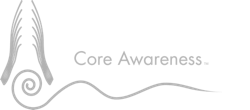Q: Is the psoas an emotional muscle? I just started doing the exercises recommended in the Core Awareness Book, and during your tele-class, and each time I try to be in constructive rest, I start feeling a strong ‘pulsing’ or trembling along both my inner thighs, particularly at the midpoint of the thighs.
I’ve tried adjusting my feet but the trembling continues and is pretty intense, so much so that a part of me doesn’t want to ‘go there’. Am I having some sort of psychosomatic reaction? I think a part of me is avoiding even trying the exercises because I don’t want to tap into my ‘core issues’. I have tried ‘forcing myself’ to stay in constructive rest, but that doesn’t feel right. Rolling into fetal position is the only position that really feels good to me right now. Should I follow my instincts?
A: The psoas is an emotional muscle! Your experience in constructive rest is a common one. I have had it myself. The leg muscles begin to let go of unnecessary tension; held energy that is both chemical and structural that vibrate and even shake the legs involuntarily. If trembling or shaking does occur, I let it. I feel safe on the ground so I know that any emotional feelings releasing are not happening in the moment and so is what may be called ‘old’ material.
I like that you are following your instincts and rolling into fetal position (on ones side with legs curled and the spine a soft C shape) when you feel ready. I recommend taking it slow and do not force anything. Always allow time after exploring constructive rest for taking a walk around the room or outside in a garden; drink a glass of water and simply be aware of feelings, thoughts and sensations that may be present. You could also try taking a warm bath using epson salts to help release stored toxins in those tense muscles.
Avoid bracing your legs by placing the feet wider apart then the pelvis. Rather than accommodating leg tension I recommend keeping your feet aligned with your hip sockets (front of the pelvis). A soft ball, yoga block or balloon the width of your pelvis, placed between your knees can often help relax the adductor muscles on the inside of your thighs. Keep your skeletal alignment and then allow any muscle dominance to let go around the supportive bones.

